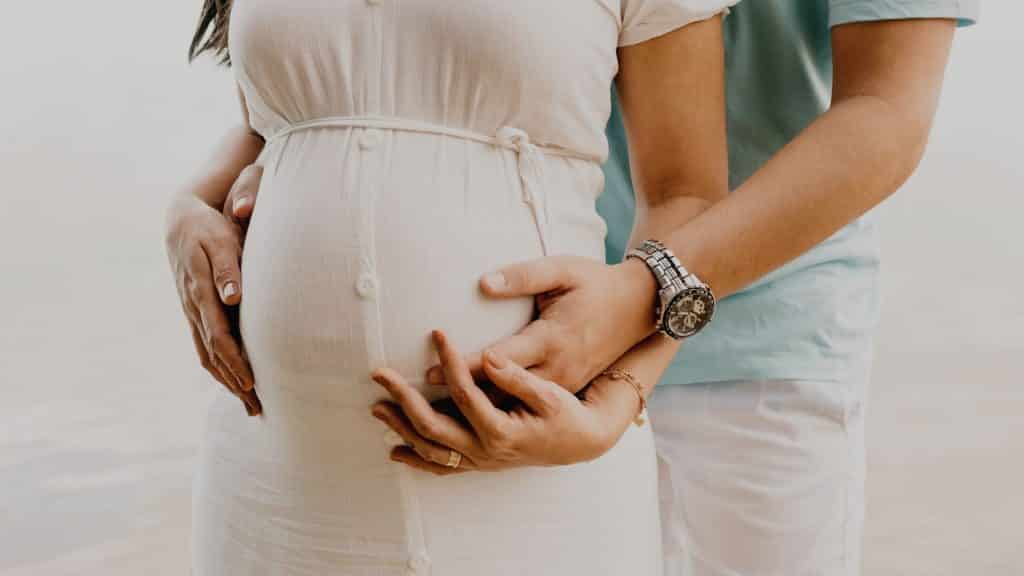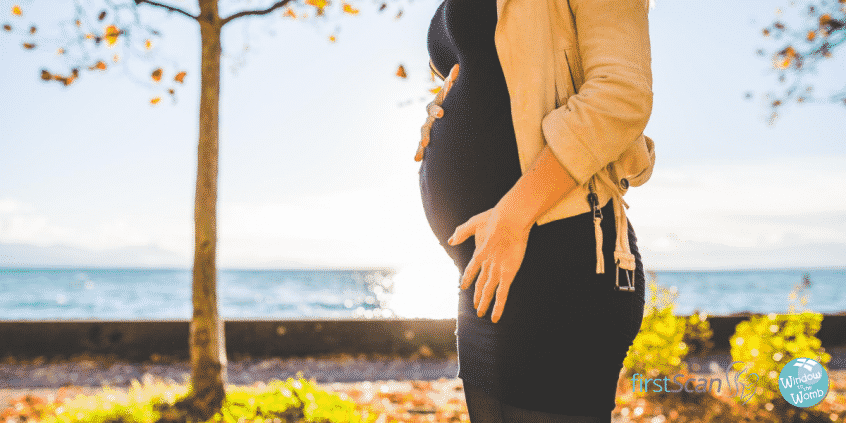Welcome to your second trimester – for many women, the most comfortable of all three. With the arrival of this milestone, you’ll experience some welcome changes. Most early pregnancy symptoms will ease up or even disappear. You’ll likely feel less queasy, your energy levels should be picking up and your breasts will still be bigger but feel a whole lot less tender. Most amazing of all: Your lower abdomen may be looking less like the remains of a large lunch and more like the beginnings of a pregnant belly.
When is the Second Trimester?
The span from week 13 to week 27 of pregnancy. Often called the ‘honeymoon period’ due to how much better you’ll be feeling! It’s also the time when you’ll start to feel the baby’s movements. Your body produces a lot of progesterone – which is the hormone responsible for lots of the nice symptoms.
Baby’s Growth in the Second Trimester

Your baby is very busy in the second trimester. By week 18 of pregnancy, they weigh about as much as a chicken breast. They can yawn, hiccup and they’ve got fingerprints on those tiny digits. By week 21 you should be able to feel their newly coordinated arms and legs give you little jabs and kicks. By about week 23, your baby takes a cue from you and starts to pack on the pounds; in fact, they will likely double their weight in the next four weeks. By the end of your second trimester, you’ll have a two-pound human in your belly. A few more exciting things going on in this trimester:
- Hair, Skin & Nails: By around week 15, baby’s first tiny hairs are starting to sprout, and by week 22, they’ve got eyelashes and eyebrows too. Baby’s skin is now covered in lanugo (a downy ‘fur coat’ that keeps them warm until more fat is built up in the third trimester) and, by week 19, vernix caseosa (a greasy layer of oil and dead skin cells that shield their skin from acidic amniotic fluid) – both of which will shed before birth.
- Digestive System: Baby’s digestive system was fully formed at the end of the first trimester. So now baby is starting to suck and swallow in preparation for life outside of the womb. What’s more, they can now taste the foods you eat via your amniotic fluid. Baby’s waste systems are working hard too. Although they still get their nutrition via your placenta, all of that swallowing means they’re also peeing around every 40 minutes.
- Senses: Baby’s ears and eyes are moving into their correct positions. By week 22 of pregnancy, their developing senses mean they’re starting to smell, see and hear and those little eyes are beginning to open.
- Heart: By 17 weeks, baby’s heart is no longer beating spontaneously, as their brain is now regulating their heartbeat. In week 25, capillaries begin forming to carry oxygenated blood through their body.
- Brain: In addition to controlling your baby’s heartbeat and inducing kicks, by 24 weeks, you baby’s brain will start blinking those little eyelids.
Changes in Your Body

This trimester, certain pregnancy symptoms may persist (like heartburn and constipation). At the same time, other’s may pop up for the first time as your belly continues to grow and levels of pregnancy hormones rise, including:
- Congestion: As blood flow is increased to your body’s mucous membranes (including your nose). You may even find yourself snowing for the first time! Fortunately, there are some over the counter medications that are safe to use during pregnancy.
- Mild Swelling of the Ankles and Feet: This is experienced by about 3 in 4 pregnant women, starting at about week 22 of pregnancy and lasting until delivery. To reduce puffiness, try to keep active, kick up your feet when you’re not moving, avoid long periods of standing or sitting and sleep on your side.
- Sensitive Gums: Sensitive gums and even some bleeding is normal – but be sure to see your dentist if your gums are bright red and bleed easily as it could be a sign of gingivitis (which is relatively harmless but can develop into a bigger problem if not properly treated).
- Leg Cramps: These can usually start in the second trimester and last through the third. It’s due to hormones and weight but also possibly a shortage of calcium or magnesium – so be sure to keep eating a healthy, well-balanced pregnancy diet.
- Dizziness: This is caused by lower blood pressure due in part to all the extra blood your body is pumping. Take it easy, eat plenty of small meals and fill up on fluids to reduce symptoms.
- Achiness in the Lower Abdomen: Also known as round ligament pain – as the ligaments that support your belly stretch to support your belly’s increasing size.
- Varicose veins and/or Haemorrhoids: Fortunately, these should shrink or go away after pregnancy if you didn’t have them before you conceived.
- Weight Gain: These next few months are when you’ll really start to gain pregnancy weight, as your appetite increases to support your growing baby. If you started out your pregnancy at a normal weight, expect to gain around 1 pound per week for a total of about 14 pounds over this trimester.
All of the above are perfectly normal and temporary – as are feelings of apprehension, irritability, forgetfulness and even frustration at looking positively plump but not definitively pregnant.
Symptoms to Have Checked Out

Odds are that once you make it to your second trimester, it should be relatively smooth sailing for the next three months. However, there are a few symptoms that do always warrant a call to your GP or midwife, including heavy vaginal bleeding, severe abdominal pain, and a high temperature. Also keep an eye out for signs of gestational diabetes (which usually starts around week 24-week 28 of pregnancy) including extreme thirst, frequent and copious urination, extreme fatigue, and snoring. Talk to your doctor if you notice a sudden weight gain, severe swelling in the face and hands and vision changes, which can be signs of pre-eclampsia.
Second Trimester To-Dos

Words to live by now: Eat well, exercise regularly and get plenty of rest. Here are the top to-dos for the second trimester:
- Prepare for Routine Monitoring: At each check-up this trimester, your midwife will check your weight, the size of your uterus, height of your fundus (top of your uterus) and the baby’s heartbeat to ensure everything is progressing as expected.
- Schedule a Level 2 Ultrasound: Usually between 18 and 22 weeks of pregnancy, your doctor will measure the baby, check developing organs, determine the amount of amniotic fluid and – if you like – let you know you baby’s gender.
- Glucose Screening: About one in 10 pregnant women is diagnosed with gestational diabetes so you will be screened between week 24 and 28 of pregnancy. If your test result comes back positive for extra glucose in your urine, it does not always mean you have gestational diabetes – you’ll need further testing for a diagnosis. If you do, your doctor will probably refer you to a nutritionist who can create a meal plan for you, and you’ll have to keep track of your blood sugar levels regularly.
- Get Immunised: If you’re pregnancy in cold and flu season, make sure to get the flu shot and get the whooping cough vaccine after you’ve reached 20 weeks.
- Shop for Maternity Clothing: Now that your bump is starting to show, you’ll need a maternity wardrobe to match.
- Sleep on Your Side: While pregnancy sleep is usually easier to catch in the second trimester than in the first or third, you will want to start sleeping on your side now, since the weight of your growing uterus puts pressure on the vein bringing blood from your lower extremities back up to your heart, which can interfere with circulation.
- Start Looking into Childcare: If you’re planning to go back to work after your maternity leave, it’s not too early to start looking into your local childcare options – whether nanny, babysitter or relative.
Window to the Womb offer a range of diagnostic scans in the second trimester. starting from just 16 weeks. If you’d like more information on these scans, please take a look at our packages on our website.

